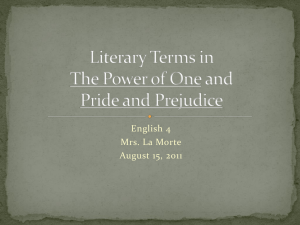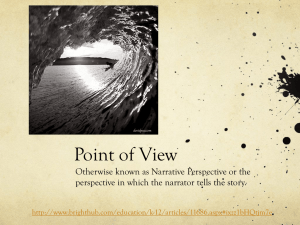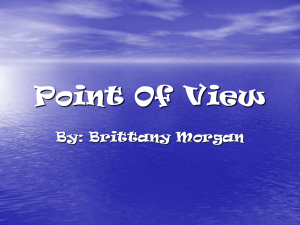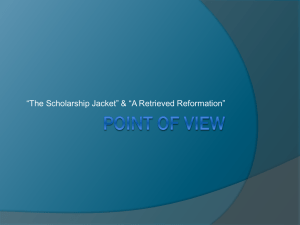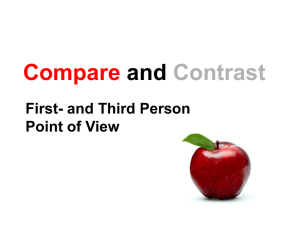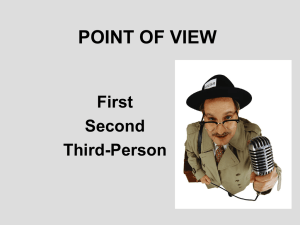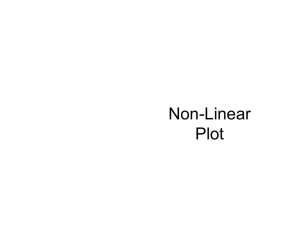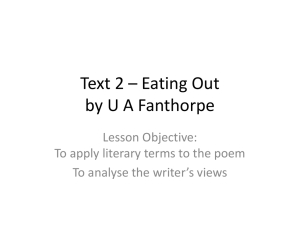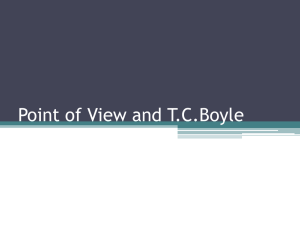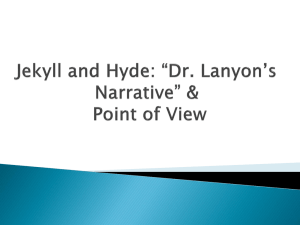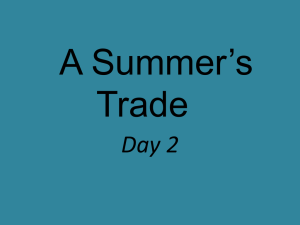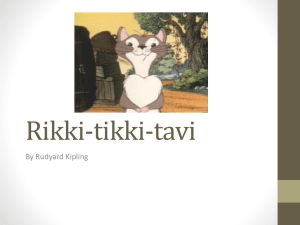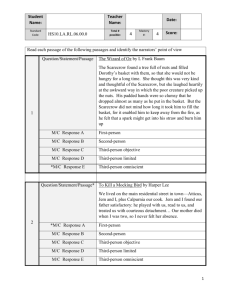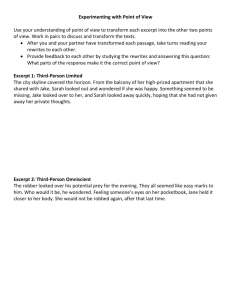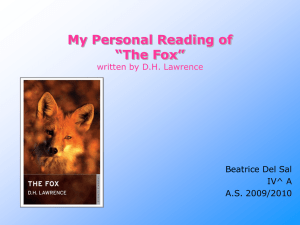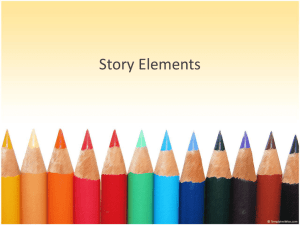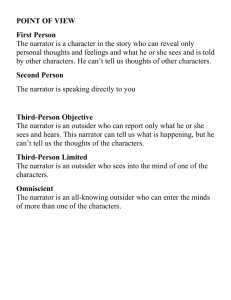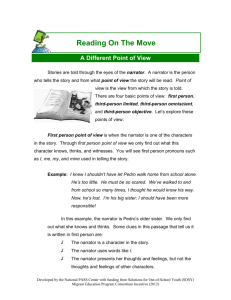Point of view
advertisement
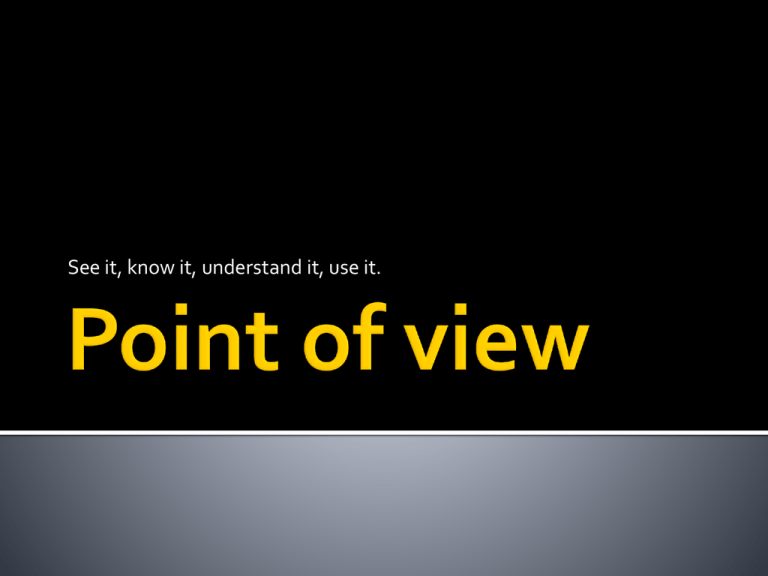
See it, know it, understand it, use it. Point of view is the angle from which the story is told. To figure out point of view, first ask yourself, “Who is the narrator?” The narrator, of course, is the voice telling the story. If the narrator is a character in the story, you’re reading first-person point of view. “When I stepped out into the bright sunlight from the darkness of the movie house, I had two things on my mind: Paul Newman and a ride home.” – S.E. Hinton, The Outsiders Pronouns give away point of view. When we’re talking about ourselves, what pronoun do we use? So, why should a story character be any different? If the narrator of a story uses “I,” the story is written in first person. Caution: Other characters can use “I” if they’re talking in the story. Make sure you identify the narrator before you decide which point of view is being used. Third-person point of view is when the narrator in a story is NOT a character. “Brian Robeson stared out the window of the small plane at the endless green northern wilderness below ... Not that he had much to say. He was thirteen and the only passenger on the plane was a pilot named – what was it? Jim or Jake or something – who was in his midforties and who had been silent as he worked to prepare for takeoff.” – Gary Paulsen, Hatchet Which pronoun indicates that third person is being used? Or, what pronouns do we use when we’re talking about someone else? “Brian Robeson stared out the window of the small plane at the endless green northern wilderness below ... Not that he had much to say. He was thirteen and the only passenger on the plane was a pilot named – what was it? Jim or Jake or something – who was in his mid-forties and who had been silent as he worked to prepare for takeoff.” – Gary Paulsen, Hatchet Omniscience: What is it? Omniscience: Knowing everything Omniscient: All-knowing What does that have to do with point of view, you may ask? An author uses point of view to help tell the story. He or she chooses a point of view that will let him or her give the reader information at the right time. Sometimes, not very often, we read stories written in third-person omniscient point of view. What does that mean? Third-person omniscient: The narrator is not a character and tells everything about everyone – thoughts, feelings, intentions, everything. Why don’t we see omniscient point of view in first person? Because the narrator would have to be a mind reader! How else would he or she know everything about every character? What do you think that means? Limited omniscience is when the narrator knows only certain characters’ thoughts, feelings and intentions. Third-person limited is a very common point of view. Why do you think that is? If you were paying attention a few slides ago, you probably have the answer. Using limited omniscience lets an author give the reader information – and hold back information – as he or she sees fit. It helps preserve surprises and build suspense. If we are told everything from the beginning, why would we read to the end of a story? Wouldn’t that be dull? Well, the most obvious reason is that almost no one uses it in literature. If first person uses “I,” third person uses “he” and “she,” what pronoun does second person use a lot? Authors use second person when they are addressing the reader directly. When would you use second person when writing? Point of view and perspective are very similar. Do you know the difference? Like we discussed, point of view is the angle from which the story is told. Even though Hatchet is told in third person, the story is told from one character’s perspective, or viewpoint. In third person, the character whose thoughts, feelings and intentions are known owns the perspective. Read the selection from Hatchet. We know Hatchet is written in third-person limited point of view. But what if we changed it? Rewrite the selection and change the point of view as directed.

